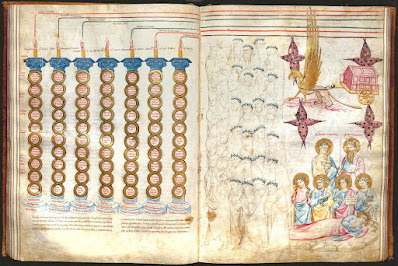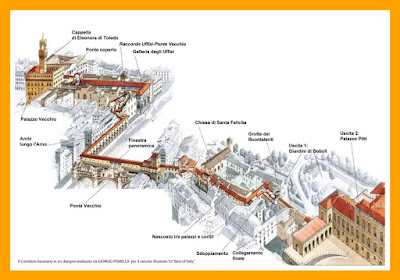From 27 November, 2021 until 8 May, 2022, an excellent art exhibition is taking place in Pistoia: Medioevo a Pistoia - the Middle Ages in Pistoia.
In 1140 at the behest of Bishop Atto, the relic of San Jacopo arrived in
Pistoia, placing this Tuscan town onto one of the most important
European pilgrimage routes, and eventually making it an international economic and artistic
centre. This art exhibition features 60 Pistoian masterpieces from the Romanesque and Gothic periods, illustrating for the first time the extraordinary panorama of the arts in Pistoia from the 12 C to the beginning of the 15 C. Many of these works have been restored especially for this exhibition and they are absolutely worth seeing.
During the period covered by the exhibition, Pistoia was well provided with enlightened patrons who attracted artists such as the sculptors Guglielmo, Guido da Como, and Nicola and Giovanni Pisano. At the end of the 12 C, two great though anonymous artists were in the
Pistoia: the Master of the Crucifix (n. 434 of the Uffizi) and the
Master of Santa Maria Primerana. Not only sculptors and painters were attracted to Pistoia but, as in other Tuscan cities of the time, also goldsmiths, resulting in works like the Silver Altar of San Jacopo. There were also highly skilled miniaturists active during this period, especially in the workshop of the Master of Sant’Alessio in Bigiano, and the elegant illustrations by the Master of the Bracciolini Chapel in the Divine Comedy preserved in the National Library of Naples were produced in Pistoia during the 15 C.
Pistoia exhibition manuscript with miniatures
During the 14 C, Pistoia was the home of artists of the calibre of Lippo di Benivieni, Taddeo Gaddi and Niccolò di Tommaso, who place Pistoia among the leading art cities of Tuscany - not to mention the Majesty and Angels by Pietro Lorenzetti. The latter is on loan from the Uffizi, and was restored for this exhibition.
Romolo di Senuccio Salvi, Reliquary of the Cross (1379-1383)
The works of art displayed at the "Middle Ages in Pistoia" exhibition are all the more interesting for their web of relationships with the masterpieces preserved in the churches and museums of Pistoia. The exhibition provides its visitors with a route by which they may discover mediaeval Pistoia via the churches of Sant'Andrea and San Giovanni Fuorcivitas (free admission with the exhibition ticket), the cathedral of San Zeno (see the Silver Altar of San Jacopo), and the churches of San Bartolomeo in Pantano, San Paolo, San Domenico, San Francesco, the church of Tau and the Baptistery.
Medioevo a Pistoia is an opportunity to spend an entire day exploring beautiful art works in a relatively concentrated area of a town that is often unjustly neglected by visitors. Don't miss it!
Medioevo a Pistoia takes place in the Antico Palazzo dei Vescovi
piazza del Duomo, 3 and in the Museo Civico
Piazza del Duomo, 1. Reservations and covid Green Passes (or equivalent) are required and tickets can be bought online at https://www.fondazionepistoiamusei.it/biglietteria/en/.
|
Author: Anna Maria Baldini





























